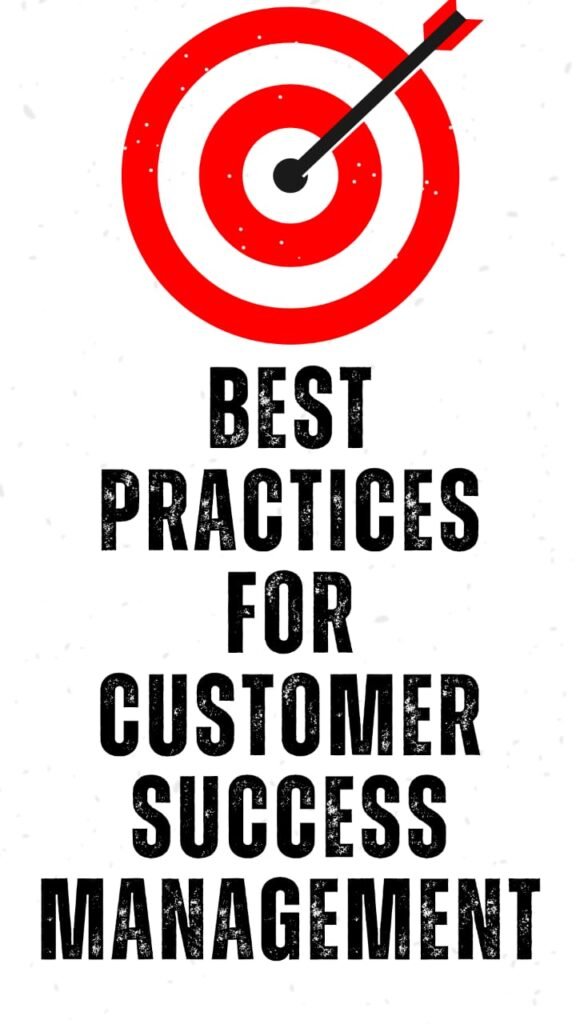Best Practices for Customer Success Management
Introduction

Customer success management (CSM) is a proactive approach focused on ensuring customers achieve their desired outcomes with a product or service. Unlike customer support, which primarily handles reactive issues, CSM works strategically to increase customer retention, satisfaction, and lifetime value. A well-implemented customer success strategy not only reduces churn but also drives revenue growth through upsells, cross-sells, and referrals
Best Practices for Customer Success Management
. In this blog, we will explore best practices for effective customer success management to help businesses build long-term customer relationships.
1. Establish a customer-centric culture Company culture plays a critical role in customer success. Businesses that prioritize customer satisfaction create better experiences and long-term loyalty. To create a customer-centric culture: Align all teams (sales, marketing, product, and support) with customer success goals. Encourage a mindset of proactive support rather than reactive problem-solving. Train employees on customer empathy and active listening skills. A strong customer-centric culture ensures that everyone contributes to customer satisfaction and retention.
Best Practices for Customer Success Management
2. Define clear customer success goals and metrics Measuring success is crucial to any business strategy. To evaluate customer success efforts, track key metrics such as: Customer retention rate (CRR) – measures the percentage of customers retained over a given period of time. Customer churn rate – the percentage of customers who stop using your service. Net promoter score (NPS) – reflects customer satisfaction and the likelihood to recommend your product. Customer lifetime value (CLV) – predicts how much total revenue a customer will generate during their relationship with your company. Customer health score – combines engagement, support interactions, and product usage data to predict potential churn. By tracking these KPIs, businesses can identify areas of improvement and optimize their customer success strategy.
Best Practices for Customer Success Management
3. Develop a strong onboarding process Onboarding is the foundation of customer success. A seamless onboarding experience ensures that customers can immediately see the value in your product. Best practices for onboarding include: Offer personalized onboarding tailored to customer needs. Provide step-by-step training and interactive product tutorials. Appoint a dedicated customer success manager (CSM) to guide new users. Set clear expectations for product usage and success milestones. A well-structured onboarding process reduces early-stage churn and accelerates customer adoption.
Best Practices for Customer Success Management
4. Build strong customer relationships Successful CSMs act as trusted advisors rather than just support representatives. To foster strong relationships: Schedule regular check-ins to understand customer needs and concerns. Provide proactive support before issues arise. Use personalized communication rather than generic outreach. Celebrate customer successes and milestones. Building meaningful relationships increases customer loyalty and reduces churn risk.
Best Practices for Customer Success Management

5. Leverage customer data for insights Data-driven decision making is a core part of customer success management. To optimize customer engagement: Use analytics tools to track product usage patterns. Identify at-risk customers based on low engagement or support tickets. Analyze customer feedback to improve service offerings. By leveraging insights from data, businesses can proactively address pain points and enhance the overall customer experience.
Best Practices for Customer Success Management
6. Provide proactive customer support Instead of waiting for customers to contact you with problems, proactive CSMs: Send out educational materials like FAQs, webinars, and best practices. Inform customers about new features that may benefit them. Monitor customer behavior and offer solutions before problems arise. Investigate involuntary churn reasons, such as failed payments or expired subscriptions. Proactive support builds trust and prevents small issues from turning into big problems.
Best Practices for Customer Success Management
7. Create a Customer Success Playbook A customer success playbook provides standardized workflows and best practices for different customer scenarios. Key components include: Onboarding workflow to ensure smooth customer activation. Engagement strategies for different customer segments (new, existing, at-risk). Renewal and upsell approaches for revenue growth. Escalation processes to handle critical customer concerns. Having a structured playbook ensures consistency in customer interactions and simplifies training for new team members.
Best Practices for Customer Success Management
8. Align Customer Success with Sales and Marketing A strong alignment between customer success, sales, and marketing ensures that customers receive a consistent experience
How CSMs Reduce Customer Attrition and Best Improve Customer Retention
websport.in
Best Practices for Customer Success Management





